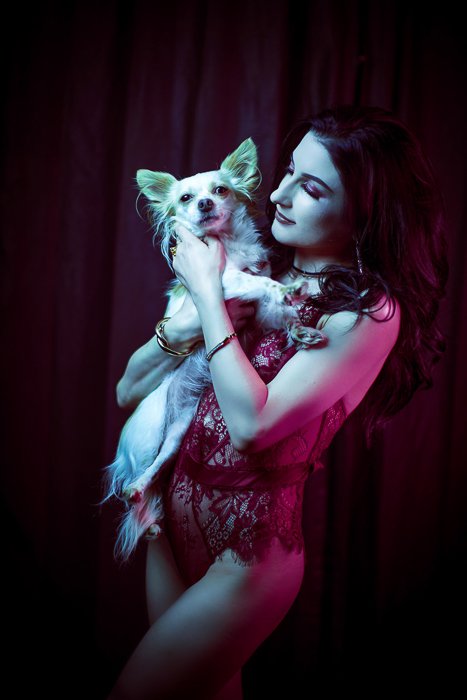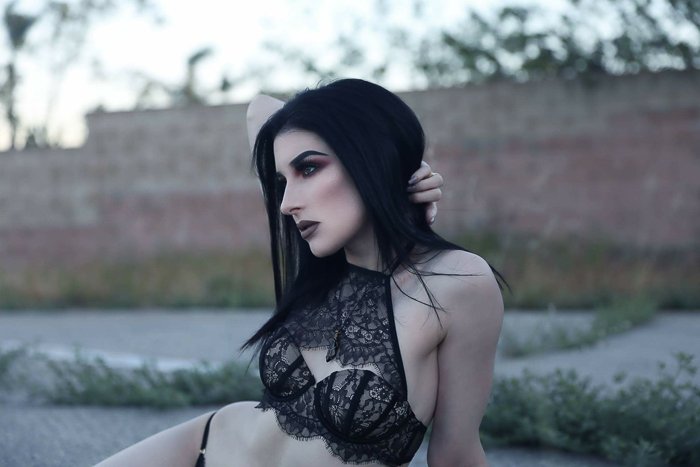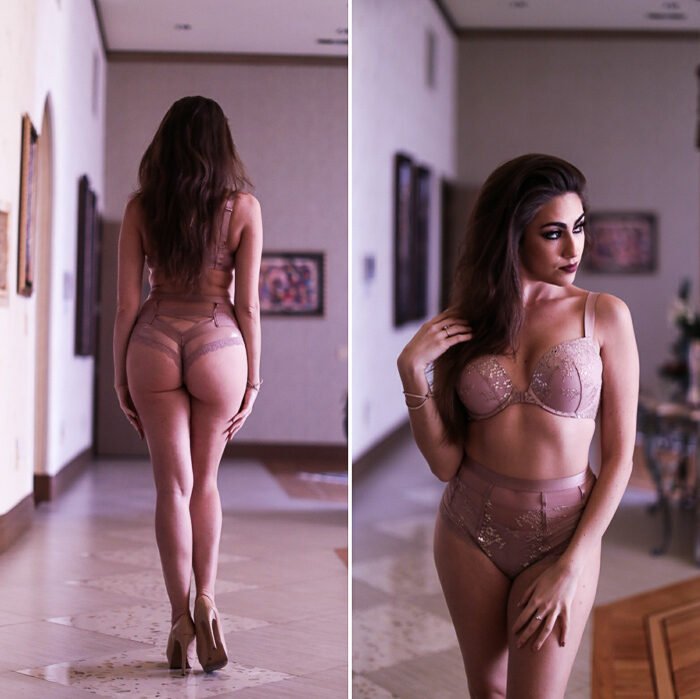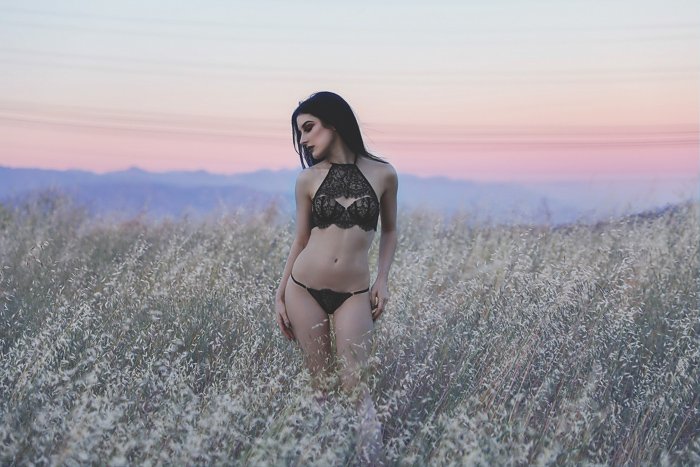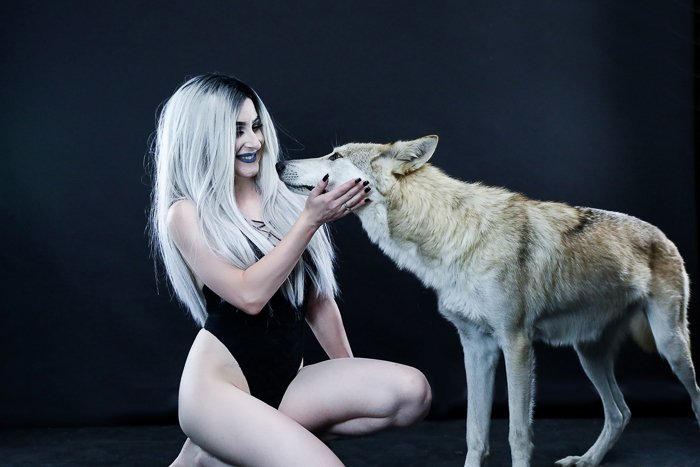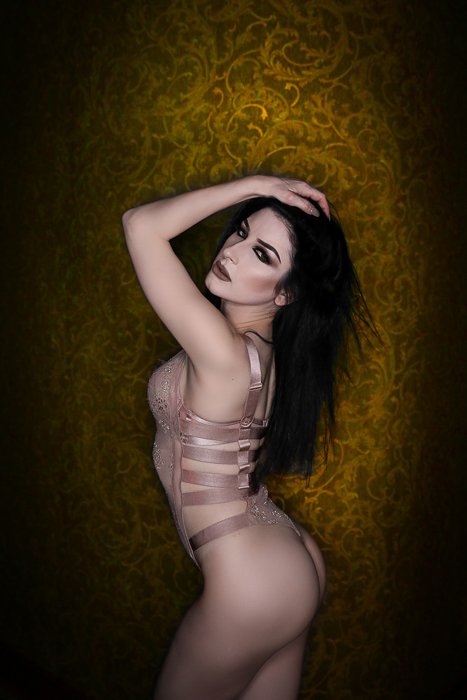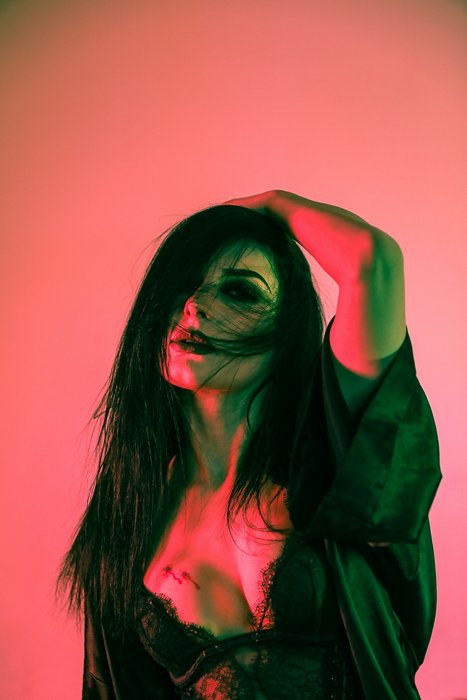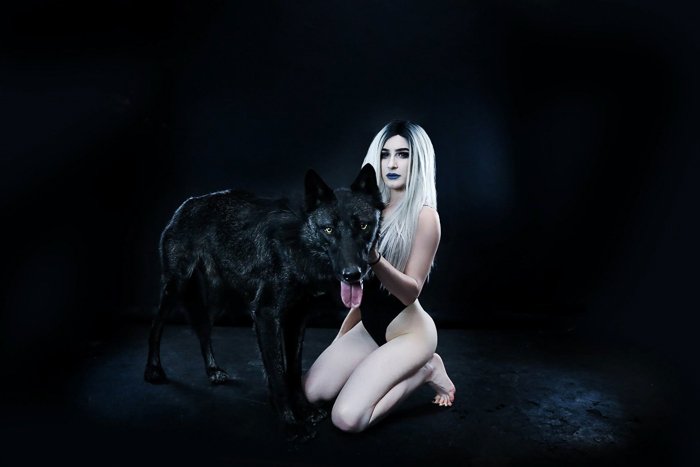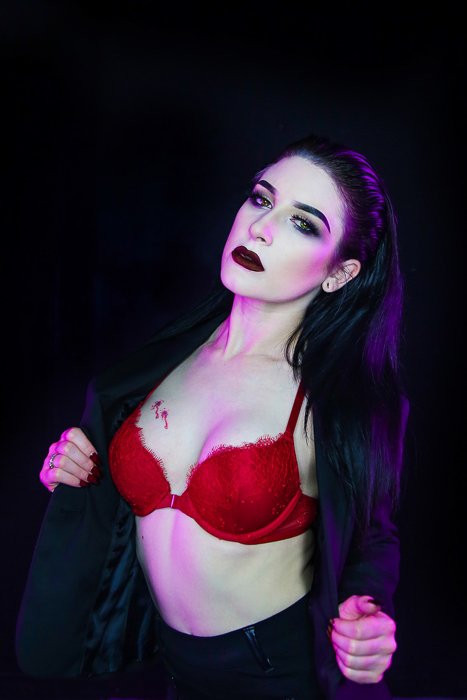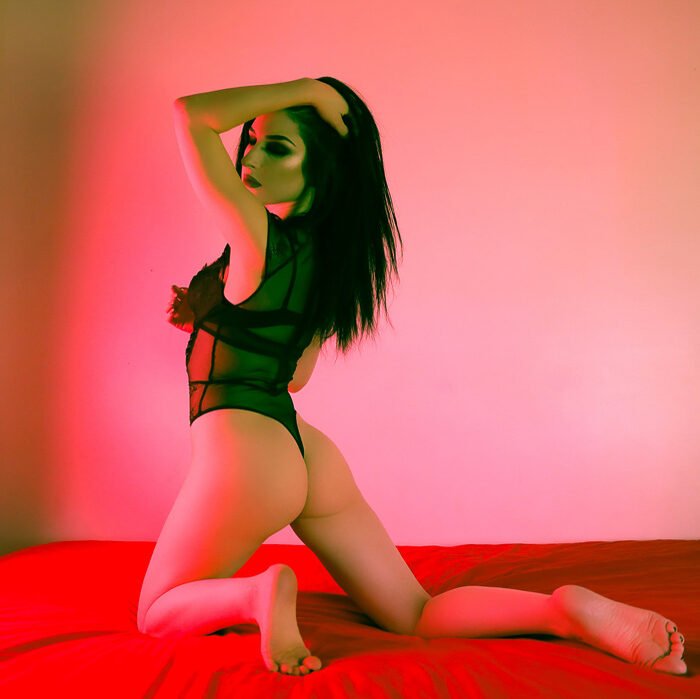A proper grasp on boudoir photography lighting separates the lingerie snapshot from a professional work of art! There are a million different ways to light up boudoir photography. Which one you desire to use is at the discretion of yourself and your client. To make it easier for new boudoir photographers, here is our guide to the various boudoir lighting methods you may be oh-so-inclined to try!
Boudoir Photography: Different Types of Lighting
Before we go through our boudoir tips, let’s chat about the different types of lighting available. Besides sunlight and other forms of natural light, you can buy artificial lights to illuminate the scene. These lights aren’t limited to studios. You can use a variety of lighting in any indoor setting. The most common lighting tends to be a strobe, Speedlite, or off-camera flash. These are lighting devices that you attach to the hot shoe on your camera or somewhere nearby. You fire them off in conjunction with the shutter. Strobes release a rapid and powerful burst of light in a fraction of a second. Off-camera flash units have a vast arsenal of accessories you can buy to modify the light output. Diffusers can soften the light or shapers can mould the light. You’re able to shoot in lower ISO numbers and have a unit that is far more portable than the rest. The downside to these lighting units is that you have to fire off test shots to see how the scene is illuminated. Next comes a series of continuous lighting options. Continuous lights are, as the name suggests, lights that stay on (and do not flash). The most significant benefit of a constant lighting unit is that you can see in real-time how your scene is lit. This is especially beneficial for those learning how to work with artificial light. The downside is that the power output of continuous light is much lower than that of flash units. You’ll find yourself raising your ISO higher and shooting with slower shutter speed. But, most of the newest camera models have minimal noise at higher ISO levels. There are different kinds of bulbs you can use for continuous lights. LED and tungsten are the most common. The LED (light-emitting diodes) lights are energy-efficient and produce very little heat. Depending on the brand name and quality, these lights can be either stable or very finicky, so keep that in mind. Tungsten lights are the most common kind of incandescent light bulbs. Tungsten lights offer the highest output levels but also generate a lot of heat.
Use Natural Available Light for Softness
With boudoir photography, utilizing natural light is quite common. The sultry images in the bedroom tend to be illuminated by natural light escaping the window. Natural light offers more airy or moody photos (depending on the edit). Natural light offers a softness that artificial light may not. It can create a more empathetic scene. But natural light also has the downside of being uncontrollable. The sun may creep into unflattering angles on the model and will need you to work with it. Moving a studio lamp can be more comfortable. My suggestion for natural light is to have the model turn her face towards the light source (like the window).
Take Advantage of the Outdoors for Even Boudoir Photography Lighting
Very few photographers consider the possibility of shooting boudoir photography outdoors- and it is very much an option! Much like indoor natural light, you don’t have much control over the outside world. But you can photograph your model during some of the more flattering times of day- such as the golden hour. The golden hour is right when the sun is beginning to rise or set and is near parallel with your subject. When the light hits the glass of your lens just right, the scene appears golden. This is a great time for a boudoir photographer to capture images because the lighting is even. Another great time to photograph boudoir outdoors is when it is overcast. The clouds act as a giant diffuser in front of the scene. This softens the light and eliminates harsh contrast caused by shadows and highlights.
Studio Lighting Setup – Strobe/Flash
If natural light isn’t your forte and you still want to pack light, you can use a strobe, Speedlite, or flash! These units are portable and can fill any room up with light. This is a great choice when shooting boudoir photography at night or in a place that doesn’t have any windows. A common way of using off-camera flashes is to aim the flash to the ceiling or towards a wall. Don’t point towards the subject because the light will be very harsh and unflattering. By bouncing off of something, the light softens and looks more flattering. If you have access to more than one flash, you can set the others and fire them off at the same time as your first flash. Try positioning these lights to the side of your subject to illuminate her hair. This positioning will offer some more three-dimensional looks to the image!
Studio Lighting Setup – One Continuous Light
I am a continuous light user, but this is just my preference! I always have a continuous light softbox sitting in my car, because often one is enough! My go-to favorite is an octagonal softbox with a tilting head. You place this light above your subject tilted down at an angle. This angle fills many of the shadows and creates a gorgeous catch light. With one octagonal light, you’re also creating a natural vignette in all the areas that the light doesn’t touch. This vignette adds a moodiness or softness (depending on editing) to your portrait. A favorite of one light is a ring light. A ring light is an LED circular lamp with a hole in the center, forming a ring. You shoot through the hollow center. This light evens out the subject’s skin and creates some separation from the background. These are easy to use and set up in front of your subject! Another way to light up your boudoir photography model is to have one softbox aimed at the side of your subject. This angle creates moody shadows. This is a great way to do some implied nude boudoir photography without showing anything. The viewer very much appreciates the mystery!
Studio Lighting Setup – Two Continuous Lights
My set up for the longest time involved two large rectangular continuous lights. One positioned to the front of my subject, and one placed to the side of my subject. The light at the front illuminates the face while the one to the side creates separation from the background. You can also have one light hanging overhead of your subject and one positioned behind them aimed at the wall. This allows your subject to have one set of flattering lighting. The wall is illuminated on its own with a different light, creating a more even separation between the two. You can also use the two lighting set up to create some unique shadows and lines during your boudoir shoot. You will find it especially useful if you gel these lights (more on gels below).
Studio Lighting Setup – Three Continuous Lights
The most dramatic and dynamic portrait photography set up utilizes three lights. There are a few different ways you can position these. One of the most effective (especially for boudoir photography) is the triangle arrangement. Make note that this does need a bit of room! You can also duplicate this look with three strobe lights. The triangle arrangement is, as the name suggests, in the shape of a triangle. One light is in front of the subject. I recommend an overhead light that hangs above the model. The other two are behind the model at an angle. The lights behind the subject create the separation between her and the background. Two options achieve the same separation, but with two different looks. The first is when you take the lights and point them both towards your model. The lights are at an angle, like triangle corners. You will illuminate the edges of your subject. This creates distance between the model and the location by highlighting her curves and hair. The second option is to turn those backlights at an angle towards the wall, away from your subject. This angle lights up your background evenly, creating distance via contrast! Whichever you decide depends upon your goal as a boudoir photographer. If your model wants to look striking and assertive, pointing the lights towards her will achieve this. If you’re looking for softness and subtlety, pointing the lights at the wall is the way to go!
Studio Lighting Setup – Gels
For something very different and out of this norm, try playing with color! Color gels are filters that change the color output of your lights. Instead of white, they come out a saturated color! You can use gels with continuous lights and lights that flash or strobe. You can either buy or make gels. Purchased gels are more reliable and produce a more saturated color, but can be pricey. Home-made gels are often created out of cellophane, wrapping the colors around a light. Although making a gel is more cost-effective, they may be less saturated or harder to work with. Another option is to pick up a light tube or panel that changes color. These LED lights can often switch to standard photography colors; red, green, blue, aqua, purple, orange, and pink. My favorite two ways of using gels in boudoir are to either saturate the frame or do a colored rim light. To saturate the frame, gel two lights and place them at either side of your subject! For rim-lighting, set up one overhead light in white and two lights to the side of your model in a gel color.
Emphasize Your Boudoir Photography Lighting With Post Processing
Post-processing and editing is as much a part of the lighting as the light source is! Post-processing is editing the image in a program after it is taken. Depending on the lighting you choose above, you can post-process in a variety of ways. The most common for boudoir photography is the natural or the cross-processed look. The natural look maintains natural skin tones and colors. This look may tint an image in a cold or warm tone depending on the mood of the portrait. When adjusting saturation, play with the vibrancy rather than the saturation slider. The vibrancy, from Adobes description, “adjusts the saturation so that clipping is minimized as colors approach saturation. This increases the saturation of less-saturated colors more than the already saturated. Vibrance also prevents skin tones from becoming oversaturated.” Cross processing, or split toning, is when you color your shadows independent from your highlights. In the example below, the highlights are colored red, and the shadows are colored green. Adobe Lightroom Split Toning sliders are the easiest to achieve this look.
Final Thoughts
Whatever boudoir lighting setup you decide to go with, make sure it satisfies your client’s wants, needs, and expectations! Lighting adds as much to the character and story of the images as the type of focal length and location you use. Now go out there and start shooting some beautiful boudoir photography lighting shots! We have a great posing guide for plus size boudoir photography or using HDR for portraits to check out next!
